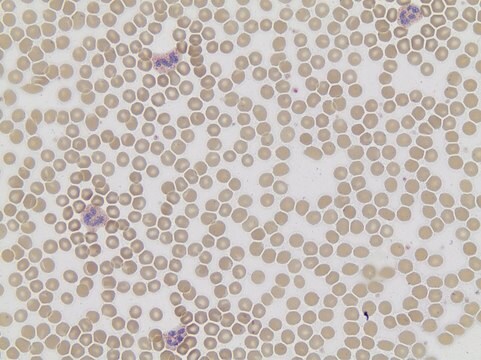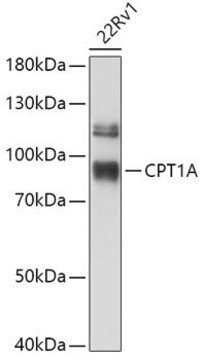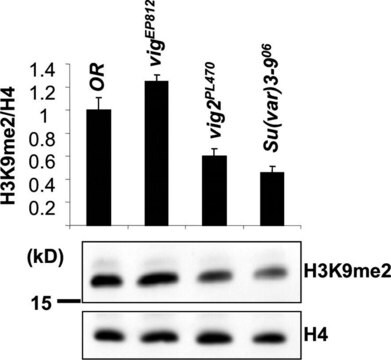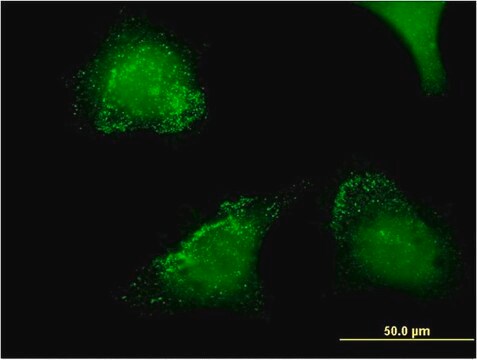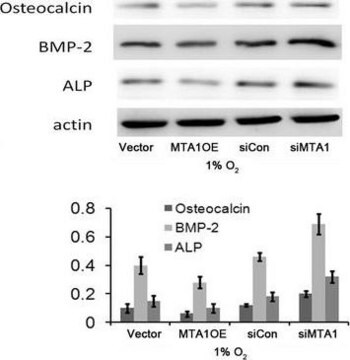MABF96
Anti-TRAcP Antibody, clone 9C5
clone 9C5, from mouse
Sinonimo/i:
Tartrate-resistant acid phosphatase type 5, TR-AP, Tartrate-resistant acid ATPase, TrATPase, Type 5 acid phosphatase
About This Item
Prodotti consigliati
Origine biologica
mouse
Livello qualitativo
Forma dell’anticorpo
purified antibody
Tipo di anticorpo
primary antibodies
Clone
9C5, monoclonal
Reattività contro le specie
human
tecniche
ELISA: suitable
dot blot: suitable
immunocytochemistry: suitable
immunohistochemistry: suitable
immunoprecipitation (IP): suitable
western blot: suitable
Isotipo
IgG2bκ
N° accesso NCBI
N° accesso UniProt
Condizioni di spedizione
wet ice
modifica post-traduzionali bersaglio
unmodified
Informazioni sul gene
human ... ACP5(54)
Descrizione generale
Immunogeno
Applicazioni
Inflammation & Immunology
Inflammation & Autoimmune Mechanisms
Immunoprecipitation Analysis: A representative lot was used by an independent laboratory in IP. (Janckila, A.J., et al. (1995). Blood. 85:2839-2844.)
Dot Blot Analysis: A representative lot was used by an independent laboratory in DB. (Janckila, A.J., et al. (1995). Blood. 85:2839-2844.)
ELISA Analysis: A representative lot was used by an independent laboratory in ELISA. (Janckila, A.J., et al. (1995). Blood. 85:2839-2844.)
Immunocytochemistry Analysis: A representative lot was used by an independent laboratory in IC. (Janckila, A.J., et al. (1996). The Journal of Histochemistry and Cytochemistry. 44(3):233-244.)
Qualità
Immunohistochemistry Analysis: 1:500 dilution of this antibody detected TRAcP in large malignant B-cells in hairy cell leukemia tissue.
Descrizione del bersaglio
Stato fisico
Stoccaggio e stabilità
Risultati analitici
Large malignant B-cells in hairy cell leukemia tissue
Altre note
Esclusione di responsabilità
Non trovi il prodotto giusto?
Prova il nostro Motore di ricerca dei prodotti.
Codice della classe di stoccaggio
12 - Non Combustible Liquids
Classe di pericolosità dell'acqua (WGK)
WGK 1
Punto d’infiammabilità (°F)
Not applicable
Punto d’infiammabilità (°C)
Not applicable
Certificati d'analisi (COA)
Cerca il Certificati d'analisi (COA) digitando il numero di lotto/batch corrispondente. I numeri di lotto o di batch sono stampati sull'etichetta dei prodotti dopo la parola ‘Lotto’ o ‘Batch’.
Possiedi già questo prodotto?
I documenti relativi ai prodotti acquistati recentemente sono disponibili nell’Archivio dei documenti.
Il team dei nostri ricercatori vanta grande esperienza in tutte le aree della ricerca quali Life Science, scienza dei materiali, sintesi chimica, cromatografia, discipline analitiche, ecc..
Contatta l'Assistenza Tecnica.